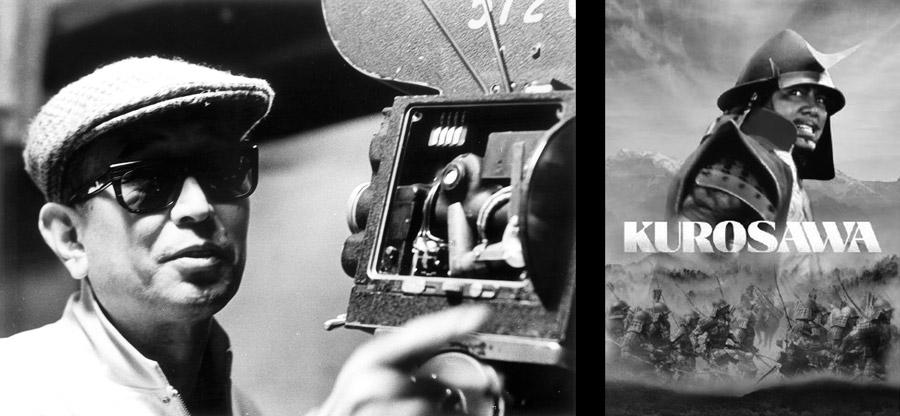An adventurous spirit in the unfamiliar past, action, suspense, romance, and toiling in a harsh environment – all necessary to fulfil a Jidaigeki, aka Japanese historical drama.
Originating in 19th-century Japan, period films were an incredibly popular form of entertainment; full of action and intrigue but also grounded in the brutal realities of feudal Japan. Kurosawa’s Jidaigeki are some of the most iconic film genres in contemporary cinema and one of his most recognizable contributions to filmmaking. Taking place in medieval Japan, feudal times, the Sengoku period, and the tumultuous post-war period.
Today we’ll explore the historical contexts behind Akira Kurosawa’s most famous Jidaigeki films that resonated so powerfully with audiences for so long.
What is a Jidaigeki film or Japanese historical drama?
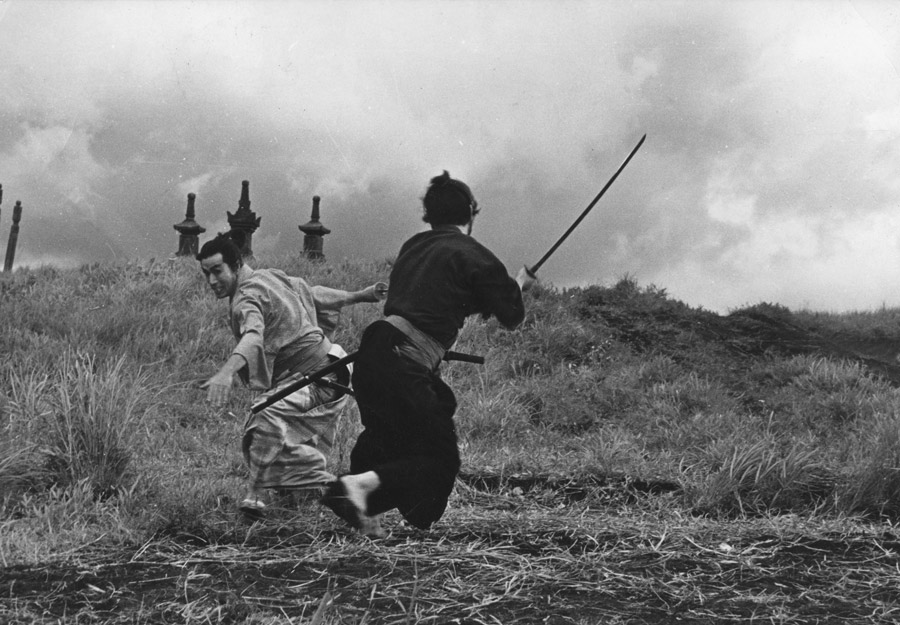
Jidaigeki or Japanese historical drama is a genre of film (and various other media) that’s based on certain periods in Japanese history.
Jidaigeki films are often set before the Shogunate was toppled during the Meiji Restoration. The most common periods explored are the Sengoku Period (or “Warring States,”, the Edo Period, and the Early Meiji Period.
Akira Kurowsawa & Jidaigeki
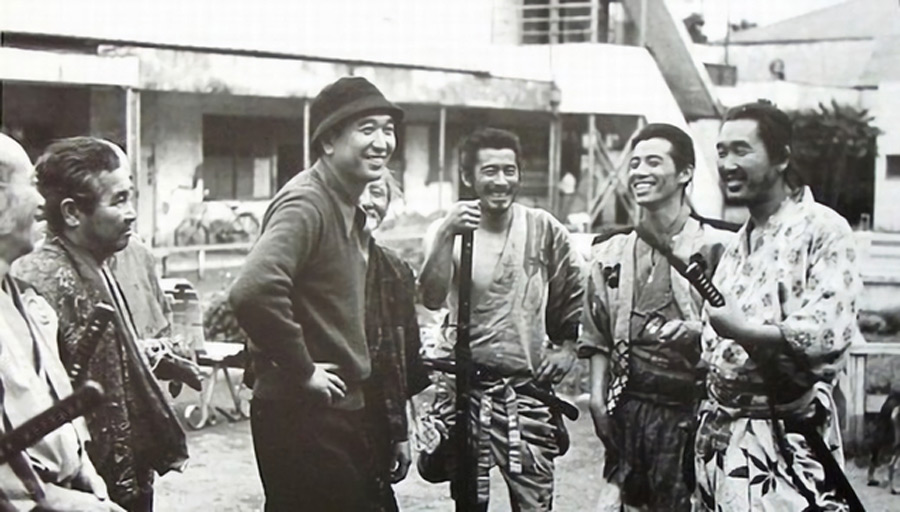
Many are aware that directors such as George Lucas and Sergio Leone have borrowed tropes, motifs, and even whole plots from Jidaigeki works but it’s been a two-way street.
Jidaigeki films have also long appropriated in equal measure from Westerns and even Film Noir. Akira Kurosawa was a recognised admirer of Wild-West filmmaker John Ford – who directly influenced his filmmaking style.
Jidaigeki films were so popular that they became linked to the chanbara eiga or “Samurai Cinema,” exploring the samurai way of life and status during times of social change. Or, in the case of Akira Kurosawa, he constructed dark and violent lone characters who were more concerned with hiding their martial arts skills than showing them off.

The Heian Period, often characterized as Japan’s Golden Age, was the final division of classical Japanese history that commenced with Emperor Kanmu’s relocation of the country’s capital from Nara to Heian-kyō (modern Kyoto).
The period was a major turning point in Japanese national culture that greatly influenced modern art and architecture as manifested through the rising popularity of vernacular poetry, literature, and paintings at the time. Heian (平安) means “peace” in Japanese.
Eventually, the Heian period came to an end after the fall of the Fujiwara clan (a powerful aristocratic family who had intermarried with the imperial family), thus, reconstructing the new Japan into a shogunate put into the hands of a hereditary military dictator, the shogun.
Rashomon (1950)

Rashomon is set during the 8th century and takes place in none other than Rashomon, the great gate of the imperial city of Kyoto pervaded by ruins and rubble.
The film opens with 3 individuals –– a woodcutter, a Buddhist priest, and a traveller –– who recount the events of a crime they had previously witnessed in attempts to discover the true identity of the perpetrator.
Using a samurai as one of the main characters in the movie is a way to pay homage to the Heian period, which is when the samurai were used to fight the Emishi, an ancient ethnic group that lived in the Tohoku region at the time of the movie.
In, Rashomon, Japan isn’t portrayed as it was during its bushido glory days during the Tokugawa dynasty (1603-1868), which was the setting for most 1950s period action movies. It’s the Japan of the Heian era (794-1185), a land that was fertile ground for allegory, mystique, and abstraction.
Gate of Hell (1953)
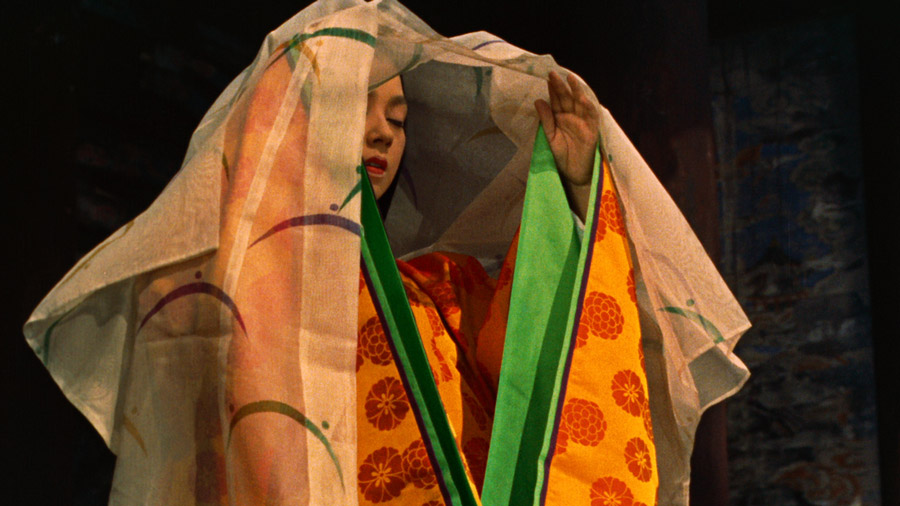
Gate of Hell takes place during the 1159 Heiji Rebellion and delves into the years of countless battles between the powerful Taira and Minamoto clans struggling to rise to the top where power, dominance, and superiority await them.
During an attempted coup, a samurai saves the life of a court lady who disguises herself to allow the royal family to safely escape. After the coup fails, the samurai requests for the woman’s hand in marriage, despite being married to an enemy soldier, as a reward for his efforts and bravery.
The Heiji Rebellion, much like in the film, resulted in a coup d’etat instigated by the emperor’s liegemen during the Heian Period, highlighting the mounting tensions and battle for political reforms and power amongst the major clans.
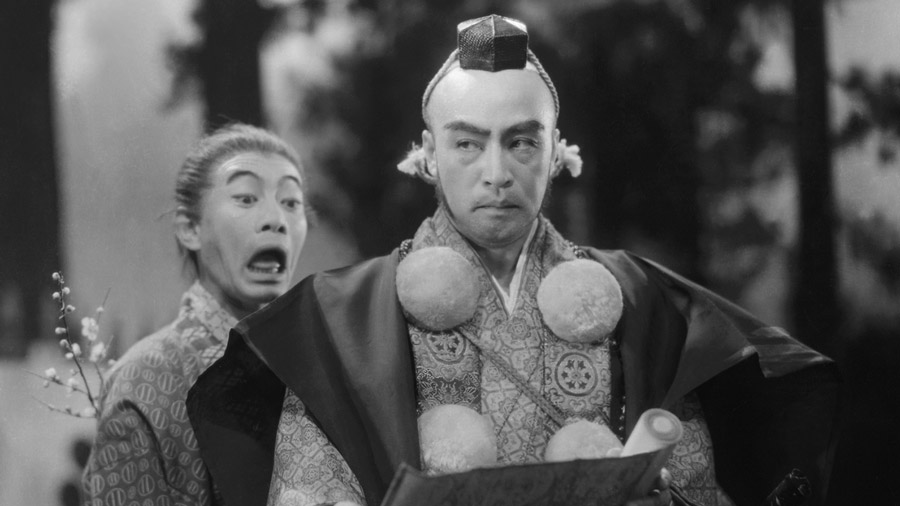
Kurosawa’s fourth film, The Men Who Tread on the Tiger’s Tail, takes place during the 1185 Genpei War marked in between the Heian and Kamakura periods. This is a time when Japanese culture dramatically shifted towards a militaristic nature due to the aftermath of numerous wars.
The film depicts the treacherous voyage of a group of samurai warriors disguised as monks as they seek to slip past an enemy checkpoint and reach safety.
The plot and characters of the film are, in fact, based on the twelfth-century real-life story of the Minamoto military commander, Yoshitsune Minamoto, in his attempts to flee the heavily guarded borders after being betrayed by his brother, the shogun Yorimoto Minamoto.
Sengoku Period
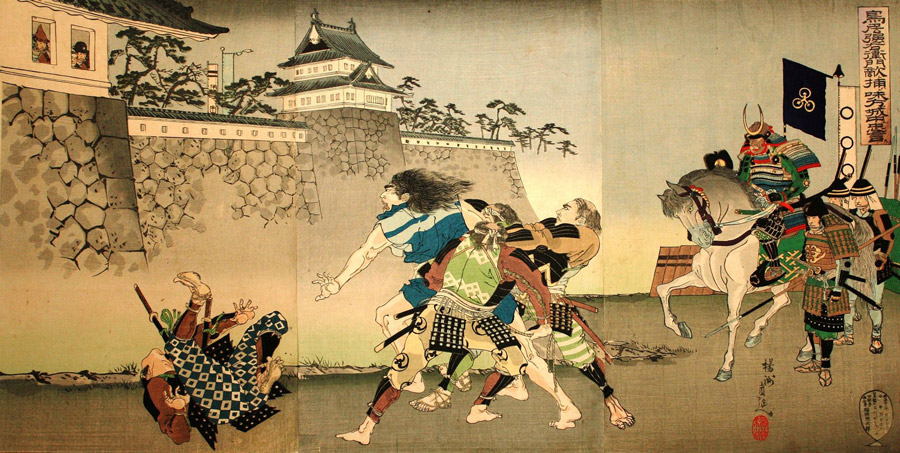
The Sengoku Period (1467-1568 CE) was a lawless century-long era characterized by rising political instability, turmoil, and warlordism in Japan. During this period, field armies and soldiers rapidly rose in number, reaching tens of thousands of warriors.
This then led to the creation of a more complex system within the military, the armored infantry known as the ashigaru. Initiated by the collapse of the country’s feudal system during the 1467 Onin War, rival warlords or daimyō, continued to struggle to gain control of Japan until its reunification under Japan’s three “Great Unifiers” –– Nagoya Nobunaga, Hideyoshi, and Ieyasu Tokugawa –– thus, bringing the war-stricken era to an end in the siege of Osaka.
Seven Samurai (1954)

Kurosawa’s critically acclaimed epic drama, Seven Samurai, takes place in 1586 and tells the story of a village of desperate farmers who hire seven rōnin (masterless samurai), to protect their crops from bandits.
The Sengoku period created the strong loners who stood in sharp contrast to the duty-bound samurai of previous periods in Japanese history. With all the Lords fighting to the death, there were a lot of dead lords. As a result, there were a lot of masterless samurai roaming about the countryside with nothing to do.
Ronin were important figures in Feudal Japan, and the depiction of such characters in Seven Samurai reflects the Feudal era perfectly.
Although Seven Samurai takes place towards the end of the Sengoku period, Japan was still in a time of chaos. Bandits roamed the countryside freely and communities needed to defend themselves – it was an “every-man-for-himself” free-for-all.
Not all that dissimilar to the Wild West, which explains the remakes.
Kagemusha centers around a low-class criminal who becomes a “double” for a daimyō on the verge of death.
The film highlights astonishing battle scenes, the newly established samurai system, and battlefields that are ultimately tied to the strife, wars, and fought battles during the Sengoku period –– one of which being the 1575 Battle of Nagashino which serves as the basis of the film’s climactic ending scene.
The daimyō in the film is also based on an eminent, real-life daimyō, Takeda Shingen, who showcased exceptional skills, leadership, and prestige during his time.
Ran (1985)
Kurosawa’s Shakespeare-inspired Jidaigeki. The storyline is based on King Lear and features elements based on the legends of the daimyō Mōri Motonari.
In the film, the daimyō is seen to be dividing his assets amongst his 3 sons by offering them his prestigious castles –– the First Castle, the Second Castle, and the Third Castle.
Often used as a representation of power and wealth, many castles in Japan were built during the Sengoku Period as regional leaders and aristocrats alike competed for power and strong regional influence to win the favors of the higher-class Japanese at the time.
Throne of Blood (1957)
Throne of Blood takes place sometime during 16th century Japan when a warrior is urged by his ambitious wife to assassinate his lord. As the film is set during feudal Japan, the characters’ roles often demonstrate their importance and unrivaled power, especially during conflicts and battles.
Kurosawa also combines classical Western tragedy with formal aspects derived from Noh drama such as the Yaseonna mask, and the flute and drum background music.
Although Noh drama has been used in Japan throughout numerous periods, this form of theater also had its fair share during the Sengoku period –– often relaying Buddhist themes that showed its prominence as powerful political players in the field.
The Hidden Fortress tells the story of two peasants who agree to accompany a man and a woman across the enemy territory in exchange for riches, not realizing that the man is a powerful general and the woman, a princess.
During Japan’s age of civil war, the film highlights a supposed dispute between the Yamana clan and the newly defeated Akizuki clan.
The Hidden Fortress then opens with the two peasants leaving everything behind to join the Yamana clan but instead, are mistaken to be a part of the rival Akizuki clan –– much to their dismay.
Both the samurai-led Yamana and Akizuki clans shown in the film are real-life distinguished clans during the Sengoku period of feudal Japan.
Edo Period

Marking the beginning of early modern Japan, the Edo Period (1603-1867) brought rise to economic prosperity, strict social order, political stability, and widespread enjoyment of arts and culture. Following the instability of the Sengoku Period, the shogunate was then officially settled in Edo (Tokyo) by the Tokugawa Ieyasu.
Under the government ruled by the Tokugawa Shogunate, Japan enjoyed over 250 years of peace and prosperity, together with increasing urbanization and modernization as well.
The period also marked the strong influence of Shinto and neo-Confucianism ideals, making it the official guiding philosophy during the period, leading to the creation of Bushidō, the Code of Warriors.
The Lower Depths (1957)

Set in a rundown boarding house during the Edo period, a myriad of residents all dream of better things and what-could-have-been outside of their slums. The film sets the scene of a disintegrated society where poverty, political and social instability, and ignorance reign, as the film’s characters attempt to survive in the harsh world.
In the film, Kurosawa makes use of a well-known comic chorus during the Edo period called Bakabayashi or “fools’ orchestra.” In this scene, the outcasts who belong to the lowest of all social classes ironically mock their despair and sufferings, sarcastically singing and praising Buddhist monks and the supposed salvation money can buy.

A Jidaigeki set in 1860 during the Bakumatsu (final years) of the Edo Period, Yojimbo tells the story of a rōnin who is sought to be hired as a bodyguard by two crime lords competing for supremacy and power.
With rising tensions of a gang war in the desolate Japanese countryside of farmhouses, the film looks back at a time when the vast majority of local Japanese were simple farmers who lived in remote villages and thatched-roof buildings during the Edo Period.
The film’s izakaya, also known as a stay-drink-place where the rōnin eventually meets his ally and confidant, traces its roots back to the Edo Period where the izakaya began its full-scale development of what we know of it today.
Sanjuro (1962)

The film Sanjuro revolves around a crafty rōnin and his attempts to help young, starry-eyed warriors weed out corruption through their fight against the clan’s corrupt officials before the collapse of the Tokugawa shogunate.
In the latter part of the film, a superintendent commits hara-kiri, a form of Japanese ritual suicide usually reserved for samurai in the olden times. With regards to the historical context in which the film takes place, hara-kiri became an elaborate ritual during the Edo Period.
Aside from being performed in front of spectators, the samurai were often bathed in cold water, dressed in white clothes, and served their favorite meal as their last before the ritual.
Red Beard (1965)
In the district of Koishikawa during the later years of the Edo Period, a compassionate town doctor and his rich yet arrogant young trainee try to understand the realities around them through the lens of social injustice, humanism, and existentialism.
The film begins to introduce the young doctor as a graduate of a prestigious Dutch medical school in Nagasaki. During the Edo period, the school of Dutch medicine was commonly known as Ranpoigaku.
Ranpoigaku referred to the medical sciences introduced to Japan in the middle of the Edo Period; consequently, paving the way for Western medicinal practices to flourish, develop, and advance.

The Meiji Restoration Period (1868-1912) was a political revolution that brought about dramatic changes in social, political, economic, and infrastructure aspects of Japanese society, whilst incorporating Western modern concepts and ideals.
The Honorable Restoration brought about a new political system under the Emperor of Japan that laid the ground for Japan’s rise to prominence on a global scale.
Sanshiro Sugata (1943)

Kurosawa’s directorial debut film and only Jidaigeki set during the Meiji Restoration. Sanshiro Sugata, takes place in 1880s Japan where a talented apprentice travels to the city to learn Jujutsu. Upon his arrival to the city’s martial arts school, however, he then discovers Judo and attempts to learn the ins and outs of the then-new martial art.
The struggle between the film’s two presented forms of martial arts poses a metaphorical figure towards Kurosawa’s recurring theme of change and modernity with regards to the Meiji Restoration Period.
In a time when dynamic changes of modernization were brought about, the film highlights a barrier between innovation and tradition, as seen in the so-called restoration movement of the country.













































